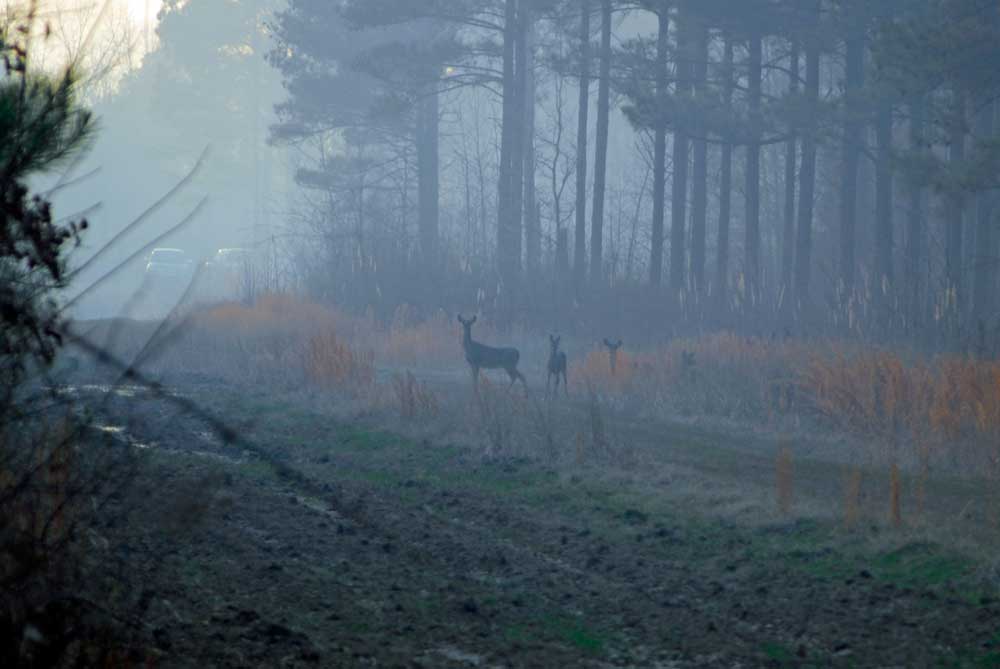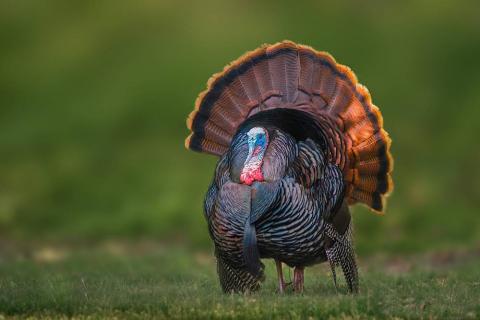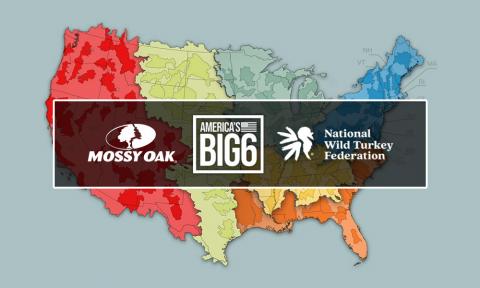David Hawley
Please, do NOT attempt a prescribed burn without proper training and/or experience!
With wildfires raging throughout the western states at the time I’m writing this, “proactive forest management” is being brought to light as a way to combat the deadly and destructive large-scale wildfires that seem to have become all too frequent in recent years. Of all available management techniques, some outsiders or land management neophytes may find this one odd: “using fire to thwart fire.” The big difference is we are using “prescribed fire” to prevent “wildfire.”

It is important to understand the historical and natural context of fire as a management tool in order to apply it as a gamekeeper in modern times. Here in the southern U.S., the landscape before the influence of man was one shaped by fire. Lightning season fires (May through July) would burn over parts of the landscape as frequently as every one to three years, which would cause the ecosystem to be a “fire-adapted one.” That means the vegetation that covered much of the Southeast was likely a longleaf pine savanna of sparse tree density and a lush understory of grasses and forbs, akin to the quail plantations of South Georgia that have adopted something akin to Mother Nature’s fire regime of frequent growing season burns amidst open canopy forests.
Native Americans learned to utilize fire to clear the land they called home and saw that the new early successional growth attracted game and grazing animals. During the last century, controlled burns have been steadily suppressed due to changing public perception of fire, which diminished the quality of habitat for many game species.
When the work of renowned quail biologist Herbert Stoddard came into prominence in the 1930s, prescribed fire slowly started to make a comeback as a viable tool for managing understory and early successional plant communities that a variety of wildlife rely upon. Stoddard’s cofounding of the “Tall Timbers Research Station” near Tallahassee, Florida, in 1958 paved the way for increased fire ecology research and pyric adoption by the land management community.
Today, prescribed fire is most commonplace in the Southeast, yet that commonality is relevant - estimates are that just 4 percent of these lands that could be burned are actually on a burn rotation. For an ecosystem and region dependent upon fire to have a mark this low shows how much work we have yet to do in returning prescribed fire to an effective and impactful level.
Across the Southeast, much of the landscape is dominated by southern pine plantations that support the region’s burgeoning timber industry. Once pine plantations go through a mid-rotation commercial thinning, this removes a number of trees and opens up the canopy. This allows sunlight to hit the previously barren forest floor and the understory plant communities come alive. Grasses, forbes, and young saplings start to emerge due to the increased sunlight. As the woody plants such as sweetgum and pine seedlings start to take control of the understory, they form a thick, almost impenetrable layer that reduces accessibility for many forms of wildlife such as wild turkeys and bobwhite quail.

Unless fire is introduced to reset the plant community and top kill these hardwoods and undesirable woody plants (thus encouraging vital grass and forb growth), the stand of timber will eventually become a de facto biological desert to these species. If fire is a part of the management regime, then instead, these areas will provide vital nesting and brooding rearing habitat to these birds.
It is important to remember that just as the landscape was fire-adapted, the wildlife thrived in these settings, because it is what Mother Nature intended. If we are, as gamekeepers, to maximize game populations on the lands we manage, we might be wise to consult Her playbook in doing so.
Today, the limiting factors to prescribed fire center around the liability that accompanies its use. Not only is the risk of a fire “getting out” always present, the greatest risk comes from smoke causing traffic visibility or air quality concerns for nearby residents. Federal courts are littered with litigation stemming from prescribed burns gone bad. While some are due to overzealous attorneys, the majority are the byproduct of someone executing a burn with minimal training or experience, on marginal days with poor conditions, or without taking the proper precautions. While we should not fear prescribed fire, we should respect it with every fiber in our being and make sure when we execute a burn, it is successful in every way.
Getting a “certified burn manager” designation should be a goal of every land manager. If you want to begin burning your property, this designation, or having a professional accompany you as you learn the ropes, is a must. Do not rely on a YouTube video and think you are going to execute a fire! Again, you owe it to everyone, in addition to the land and animals that inhabit it, to know what you are doing to ensure safety and success.

Once you understand how to safely and effectively execute a prescribed burn, creating a burn strategy that accomplishes the needs of your property is an important step. Many land managers only burn their pine plantations during the dormant season (post-frost to spring green-up) due to the excellent conditions and in their zest for preparing the woods for turkey season. While this is undoubtedly the predominant burn window in this region, it should not be the only manner in which we burn. It also doesn’t take into consideration all the other types of prescribed burns that may be used in other parts of the country or to accomplish specific goals.
“Growing season fires” replicate nature’s “lightning season fires” that serve to shape the understory plant communities to their intended composition of grass and forb structure. They do so by “top killing” the woody stem competition that starts to take over the understory if left alone. A dormant season fire, while still beneficial to remove fuel, will not have this effect. For that reason, growing season burns need to be in a land managers’ toolbox in the event a true reset of the plant community is needed to benefit the wildlife utilizing that understory.
These fires have become controversial due to the outrage of burning during wild turkey nesting season. While I personally am squeamish about lighting fires in April and May, it’s important to note that this time period coincided with traditional lightning season fires. If this was a fundamental problem to turkey populations, we’d likely not have turkeys today.
Even if early growing season fires are not your thing, a broader window for achieving these exists. I personally like late growing season fires prior to the frost as a way to “top kill” hardwoods and catch some more favorable (and tolerable) weather conditions. Regardless of when during the growing season one chooses to burn, to truly maximize the habitat, you need to employ some growing season fires as your understory requirements dictate.

We also need to grasp that creating a mosaic effect through alternating burn blocks is greatly beneficial to wildlife. By having blocks of timber burned in alternating years, or even alternating between dormant and growing season burns, we can provide wildlife with different habitats in juxtaposition, which can be critical for wild turkeys in particular. A one-year “rough,” or stand burned a year ago, adjacent to a two-year rough will provide two different stages of habitat, the first being likely brood rearing habitat and the latter being nesting habitat. Studies have shown that broods that can quickly and closely move from nesting cover to brood cover have a dramatically increased chance of survival.
The scale of these units can also matter. Research by Dr. Mike Chamberlain, of the University of Georgia, has shown that when the size of a burn unit increases over 50 acres, the interior utilization by wild turkeys decreases. Similar studies by Tall Timbers Research Station have shown the optimal size for burn units for quail is 40 acres. While few of us have the ability to burn more than 40-50 acres in a burn unit, the takeaway is that sometimes smaller can be better. This brings me to a good point - regardless of whether you have large acreage to work with, getting some fire on the landscape is better than none and can still have benefits. Work by Dr. Marcus Lashley, while at Mississippi State University, showed almost immediate positive responses by wildlife for burns as small as one acre.

Many land managers also use fire to create early successional plant communities in hardwoods and open field settings. Both of these fire varieties can be also be very beneficial to wildlife, and both require different approaches.
For hardwood burns, the modus operandi is normally dormant season burns with very low fire intensity to prevent tree scarring. Backing fires against the wind are typically used to allow the fires to slowly creep through the timber stand and consume the layers of duff and debris. Open field fires can produce high intensity fires due to the highly flammable grasses and thatch, so extra care is in order to ensure adequate fire lines are established.
The closing sentiment is that because fire is arguably as natural an element in our ecosystem as is rain or wind, we must learn to safely and effectively utilize this tool to maximize the game species that can and should benefit from it. We have a responsibility to not only be good stewards of this tool, but to advocate for its use and improve public perception of prescribed burns. I encourage you to begin your path towards becoming a “burn boss” today!




























